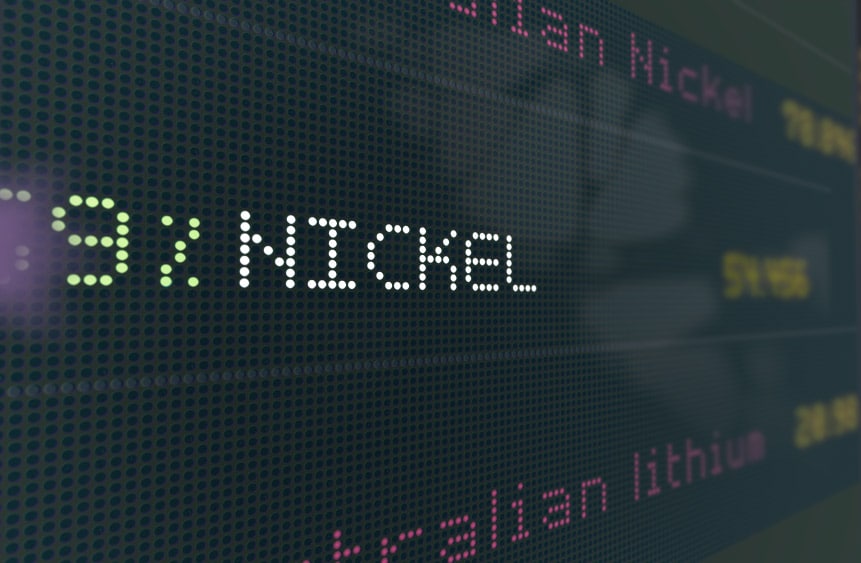Stainless MMI: Index Falls as Stainless Steel Price Appears Bearish

The Stainless Monthly Metals Index (MMI) fell 7.53% from March to April. Downside momentum continued to pressure the nickel market, sending prices down into support zones. Meanwhile, no bullish reversal patterns have formed, leaving the global stainless steel price at high risk of further decline.
Get weekly updates on nickel and stainless steel price trends as well as other commodity news with MetalMiner’s free weekly newsletter. Click here.

Nickel Market Shifted into Surplus, While Inventories Declined
According to the International Nickel Study Group (INSG), the nickel market shifted from deficit to surplus in 2022, and thus the stainless steel price index was effected. Supply overtook demand by 112,000 tons, marking the largest surplus since 2014. A boost in mining and production in Indonesia, which alone accounted for roughly 48% of global nickel output in 2022, significantly supported supply.
However, the surplus provided little relief for LME inventories, which continued a decline that started in 2020 and now sit at their lowest level since 2007. The class of material is the main reason for the disparity between global supply and inventories. Both the LME and SHFE trade Class 1 refined nickel. However, the boom in Indonesia has largely related to Class 2 material, which impact stainless steel prices.
Moreover, only around 21% of global nickel output is currently deliverable against the LME nickel high-grade contract, compared to around 50% in decades past. Such shifting market dynamics have eroded the LME’s use as a benchmark. According to Reuters, “around 70% of the nickel supply chain is now priced at a discount to the LME benchmark.”
MetalMiner customizes price points, price forecasts and procurement solutions based on the specific metal type your company purchases. See MetalMiner’s full metal catalog.
LME Makes Big Changes a Year After Crisis, Stainless Steel Price Effected
Just over one year ago, the nickel market witnessed a squeeze that saw prices roughly triple before the LME promptly halted and canceled trades. The controversial move by the exchange triggered an exodus across many of its contracts, but especially nickel. In an ongoing bid to strengthen markets and boost participation, the LME announced a new round of changes on March 30.
Here are some of the changes set to occur over the next few years:
- The LME plans to fast-track the approval of new brands it allows suppliers to deliver against its contracts to three months, the first being coarse nickel powder. The organization also announced a fee waiver for new brands.
- The exchange will launch a new Class 2 spot market in China for both nickel matte and nickel sulfate.
- The LME will make daily price limits permanent and revise them down to 12% for copper and aluminum.
- The LME will reassess and recalculate the amount of cash required for dealers to post for trading losses. This could see the exchange shift to a realized variation margining model used by other clearinghouses.
While the LME is yet to implement many of these changes, the announcement saw no major market shift. Nickel prices continued to edge downward during the first week of April, before they hit a bottom on April 6. Liquidity, meanwhile, has shown no meaningful signs of recovery, as both open interest and daily trading volumes sit significantly beneath their pre-crisis averages.
Curious about stainless steel price movements? Check out MetalMiner’s stainless steel should cost models by scheduling a demo of the Insights platform.
GCHL to Create Indonesian Nickel Indices

As the LME works to maintain its dominance, Global Commodity Holdings Limited (GCHL) continues to make moves to build its own position in the market. According to a recent release, the UK-based company signed an exclusive deal with PT Indeks Komoditas Indonesia (PT IKI) to develop indices for Indonesian nickel.

The statement claims the purpose of the indices is for “transactions, budgeting, forecasting and as a tool for the Indonesian government to control and monitor nickel mines and downstream activities.” One index will relate to nickel produced in Indonesia, while the other will relate to Indonesian nickel ore.
Like the LME, GCHL has taken note of increased nickel output from Asia. Should the upcoming indices gain traction and start being used to value exports for taxation, they could become a benchmark. Exchanges could also develop the indices to create futures. Meanwhile, the market still awaits the launch of GCHL’s Class 1 nickel trading platform, which it expects to go live later this month.
Stay on top of monthly metal trends and understand macroeconomic factors causing market volatility. Subscribe to MetalMiner’s free Monthly Metals Index report.
Biggest Nickel and Stainless Steel Price Moves
- Indian primary nickel prices moved sideways, with a mere 0.68% increase to $29.84 per kilogram as of April 1.
- Meanwhile, Chinese 304 stainless prices fell 11.05% to $1,586 per metric ton.
- Chinese 316 cold rolled coil prices declined by 14.45% to $4,145 per metric ton.
- Chinese 316 cold rolled coil prices fell 23.31% to $2,647 per metric ton.
- Finally, Chinese ferromolybdenum lump prices saw a 40.97% drop to $29,619 per metric ton.


Leave a Reply